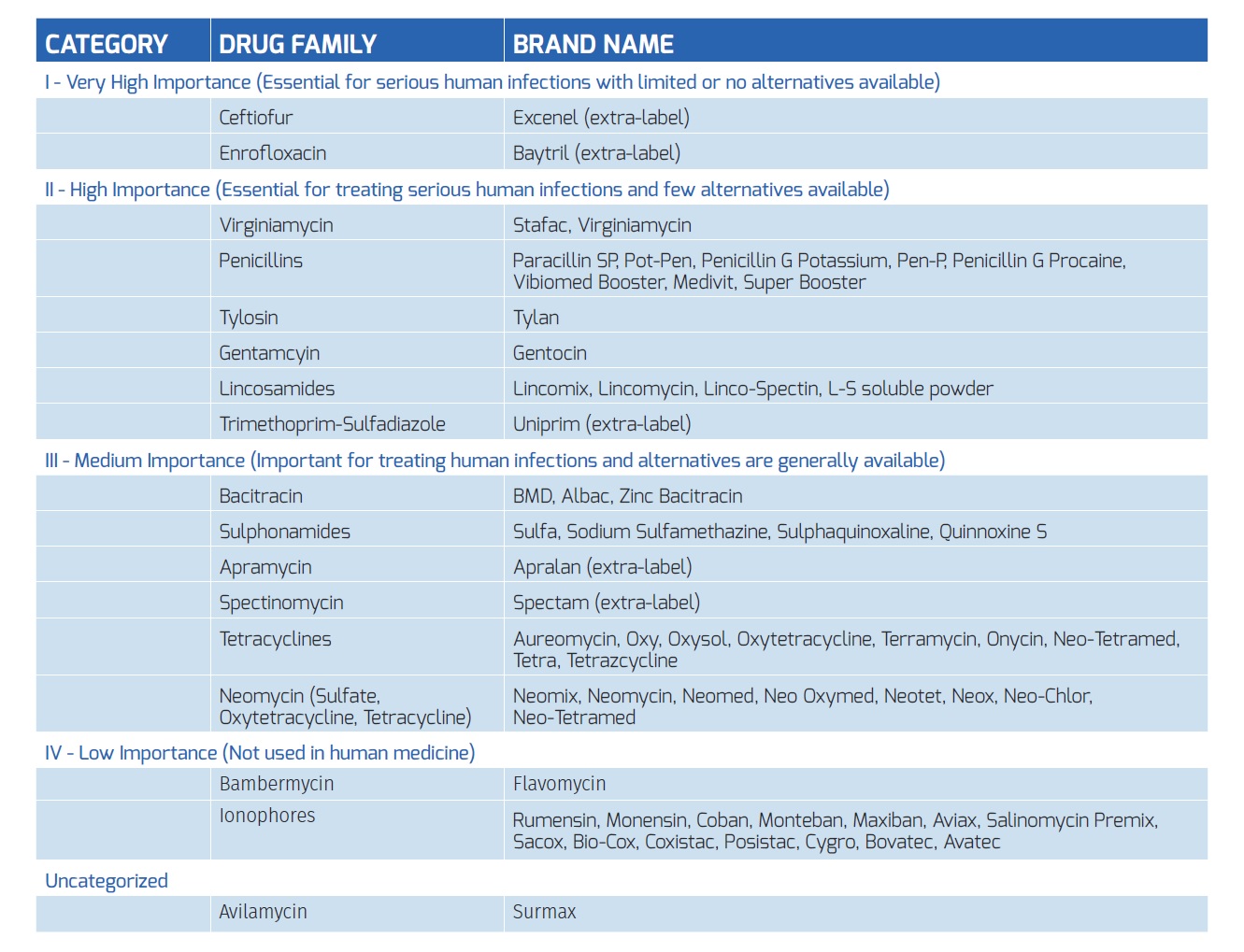


 Français
Français


CFC’s AMU strategy is a step-wise approach that focusses on the preventive use of antimicrobials of human importance (Category I-III). CFC’s strategy has been developed to provide a sustainable means of meeting consumer expectations, while protecting the health and welfare of birds, and preserving effective treatment options.
Reduction Steps:
Building on the elimination of the preventive use of Category I and II, CFC is now be focusing on a non-regulatory approach to further reducing antimicrobial use, with specific attention on reducing the preventive use of Category III antimicrobials.
Moving forward, CFC will be working with key supply chain stakeholders to promote reduction strategies, increase access to animal health products and share lessons-learned on reduction experiences.
CFC’s Responsible AMU Strategy only focusses on preventive use of Category I, II and III antibiotics. This is not a “Raised Without the use of Antibiotics” strategy. CFC’s strategy continues to allow:
As CFC’s Responsible AMU Strategy evolves, the strategy will continue to provide a sustainable means of meeting consumer expectations, protecting the health and welfare of birds, and preserving effective treatment options.
Categorization of Antibiotics
Antibiotics are ranked (Categories I-IV) by Health Canada based on their importance to human medicine.
The following table provides the classification of antibiotics:

Chemical coccidiostats are not defined as antibiotics. These products include: Nicarb, Robenz, Amprol, Zoamix, Coyden, Stenerol, Clinicox and Deccox.